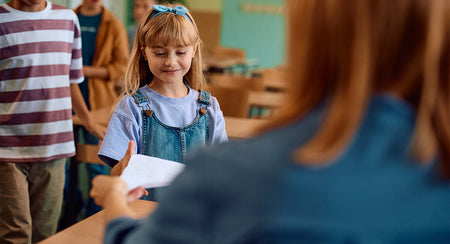As human beings, we often internalize how we are treated, and our students are no exception. While the intensity with which students seek evidence and reassurance of our relationship with them may vary, all students want to know that they matter to us, that we are attentive to their needs, and that we want them to succeed. Even students who may seem to resist our influence and reject our guidance want to be connected and included. These students may be carrying negative past experiences that make it more difficult to make connections and gain trust with adults in their life. It is crucial to not give up on making these connections and continue attempting to forge a relationship with these students, even when it doesn’t seem possible.
It is also true that much of what we communicate to students about our feelings toward and perceptions of them are not scripted and often are not even consciously demonstrated. Yet, students watch, feel, analyze, and interpret our words and actions to discern where they can find reassurance, protection, and connectedness. Let’s examine eight ways that we communicate to students what they mean to us, what we think about them, and what our actions and intentions say to them:
- Noticing. A greeting at the school or classroom door, an authentic and personal smile, or fist bump can send an unmistakable message that students are noticed and they count. These seemingly small gestures can have an outsized impact on how students feel about us and about themselves.
- Respect. Regularly calling students by name, listening to what they have to say, sharing their victories and empathizing with their struggles tell students that they are worthy and have our respect. When students feel respected, they are more likely to show respect in return.
- Safety. When we establish and consistently enforce reasonable rules, refuse to tolerate hurtful teasing and harassment, and otherwise attend to students’ physical and emotional safety, we free students to be themselves. We make it safe to participate and take learning risks. When we create an environment that students feel is safe, we set the stage for everything else we want to accomplish.
- Caring. While noticing is important, caring goes the next step to inquire, listen, and act. A question or comment when students may not be feeling well or are having a bad day, offering to do something to help, and even stepping up to advocate for a student who needs adult support can create a significant, lifelong impression on a student who feels lost and helpless.
- Belonging. When we build a classroom community, encourage respect and inclusion, and step in when students are shunned and ignored. It is important to assure students that they are welcomed and belong. Students who may lack social skills, come from backgrounds from other students, and otherwise may struggle to fit in can be especially aware to whether they have a place and feel connected to the class. These students often appreciate our attention and actions more than we know.
- Confidence. “I know you can do it”, “I have seen you find your way through difficult challenges before”, and “I believe in you” are all powerful statements when students hear them from us. Feeling our confidence can make the difference between giving up and persisting in the face of difficult learning or life challenge for students. Students do not always believe in themselves. Our confidence may be exactly what they need to feel to find their way through.
- Positive presumptions. Assuming that students are well-intended, trying to do the right thing, or simply made a poor choice when they made a mistake or behave inappropriately can send a powerful message about what we think of them and the behavior we expect from them. Giving students “the benefit of the doubt” reassures students that we view them as more likely to act positively than engage in mischief. Assuming that students are trying to meet our expectations encourages positive behavior. Assuming that students are purposely misbehaving risks encouraging them to validate our negative assumptions.
- Forgiveness. When we give students a fresh start after a bad day and avoid rehashing yesterday’s conflict or reminding students of past disappointments, we signal to students that we are focused on what today will bring. They do not have to fear retribution or uncomfortable reminders from the past. We free students to face forward and do their best without being hampered by guilt and regret.
Taken together, these eight connecting and confidence building behaviors can have a powerful impact on how our students feel and behave. However, this is not necessarily an all-inclusive list. What behaviors would you add to reassure and connect with students?















